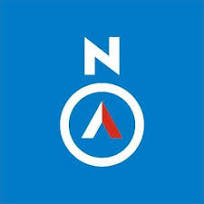Browse transcripts » National Archives / Archives South Holland
Summary (also from the next page)
On February 1623, news arrived about two ships being lost: the ship Banda was wrecked entering Texel, and the White Lion caught fire near St. Helena while fighting two Spanish ships. This was a significant loss for the East India Company.
In Bantam, the trading post was burned down and rebuilt, but remained at risk of burning again. The pangran (local ruler) of Bantam appeared to distrust the Dutch, fearing their trading post might become a fortress. The Chinese were now allowed to build stone houses in Bantam to protect against fires.
The Company was planning operations in Louhou and Cambello. The English were expected to arrive with ships to trade there. The Dutch needed galleons and rowing vessels but lacked the shipwrights to build them. Suggested locations for building these vessels included Kei, Aru, Succadana, and Bansarmassin.
The Chinese in Bantam were expecting 7 or 8 valuable cargo ships. Money was needed at all trading posts in the Indies to take advantage of trading opportunities. Governor General
The letter was written in Bantam on November 10, 1614.
Transcription
Ick hebbe v E. schrijvens van Dato v:m: februarie lestleeden Ao 1623 wel
Ontfangen, dach wott verstaen de droenige tijdinge der 2 scheepen.
Bij names het schip Banda, t'welck in Incomen van texel verongeluck
is. Ende het schip een witten leeuw ondert Eijlant Sr Helena Jn slaenv
tegens 2 Curaecqen door sijn eijgen vier is om den hals geraeckt, twelck een
treffelijcke schade is geweest voor de oostindische Compe: Doch verhoor
Dat godt ons die schade weederomme van een ander hant Dobbel sal
vergelden
t'was mij een groote veranderinge als oock een verwonderinge Alhier tot
Hantham te sien onse Logie alsoo aff gebroocken en verbrant die nu
wederom licht is opgemaeckt. En perijckel van lichtelijck wederom
verbrant te worden. Daer nu soo weijnich commoditeijt is. Om Costelijcke
goederen te bergen. het schijnt dat deesen pangran van Hantham
ons weijnich goets heeft toe vertrout. en gevreest heeft dat dit huijs
te Bantham d' een tijt off d'ander tot een Casteel verandert soude
mogen worden, & door vreese van sulcx t'selue heeft laten afbreeck
&ne off daer de Engelschen mit toe gerocken en hebben. Dat weet
Godt die een kinder is van alle saecken —
Maer dat het selue door een quade genegentheyt ofte onlust
t' onswaert en is niet geschiet. Maer door Enckel vreese die
den pangran voor ons heeft.
Docheer den Gouverneur Gennerael van hier sal vertrecken
Inne wart aen. sullen den pangran ende de groote gaen spreecken
Om dat daer Inne sal mogen werden versien. Het is een wonderdinck
dat den pangran onse Logie heeft doch aff breecken. Daer
hij nu van onlanghs harwarts alle die chineesen heeft toegelaten
steenen huijsen te mogen bouwen, t'welck te voren noijt en hebben mogen
doch. Waer door men nu siet die chineese ouer nacht &ne dach
arbeijden, Om haer huijsen van steen te metselen. Om der door
vande groote perijckelen des Brants verlost te weesen. In zomma
wat in deese saecke van onse huijsinge te doen sal staen. En sal men
hier niet versuijmen. al eer wij van hier seijlen. wam daer en dient
niet op geslapen, alsoo de Compe Daer grotelicx is aengeleegen.
vat voorder aengaet de saecke van Louhou ende Cambello daer jnne
sal men oock soecken te doen. Dat mogelijcken is. t'welck ter profijt
ene voordeel van Oostindische Compe strecken sal De meenige is
soo haest deese Jacht het heeft vertrocken sal wesen. sal men beginn
te bespineeren end resolueeren wat saecken men eerst bij de hant
sal nemen, het sij het stuck van Banda Ofte dat van louhou
ende Cambello beijde de plaets soude de Compe. seer dienstich wesen
Daer van verseeckert te sijn. want d' Engelsche die haere scheep
alle dage sijn verwachtende. Dreijgen ons darwarts te willen gaen
handelen. Om sulcx wel te Effitueeren ende die plaets tot onse
Obedientie te brengen. soude ons wel dienen. Eensdeels gallzotten
& roeijjachten de welcke ons ontbreecken, als oock mede de
timmerlieden die de selue soude connen maken.
aengaende de plaets die de heeren Bewinthebberen. ons aenwijsch
bij namen. keij. Arou. Succadana ende Bansaermassin. om
aldaer roeij jachten. Galleijen ende Galliotten te becomen. is noch
al een rou werck, dat soo haert niet en can te wegen gebracht worden.
Gelijck dat selve wel soude vereijschen. Maer sul en ons best
doen. Ipne daer in voor deesen tijt soude connen gedaen worden


Source citation
National Archives / Archives South Holland, archive number 1.04.02, Inventaris van het archief van de Verenigde Oost-Indische Compagnie (VOC), 1602-1795 (1811), inventory number 1057, Heren Zeventien en kamer Amsterdam, INGEKOMEN STUKKEN UIT INDIË, Overgekomen brieven en papieren, Overgekomen brieven en papieren uit Indië aan de Heren XVII en de kamer Amsterdam, Overgekomen brieven en papieren uit Indië aan de Heren XVII en de kamer Amsterdam, 1615. B
Artificial Intelligence (AI)
The summary is created by the computer based on a language model.
Both artificial intelligence tasks are not perfect, but often more than sufficient so that the historical document becomes understandable.

